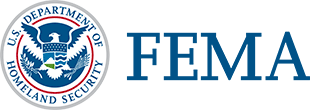The Unified Federal Environmental and Historic Preservation Review for Presidentially Declared Disasters contains information relevant to environmental and historic preservation (EHP) reviews for disaster recovery projects. They provide a framework for dealing with EHP requirements during disaster recovery. Begin by selecting one of the links below.
- Resources for Practitioners
Resources, including the Practitioner Guidance, for practitioners conducting environmental and historic preservation reviews. - Resources for Applicants
Resources, including the Applicant Guide, for federal assistance applicants seeking information to support and expedite environmental and historic preservation reviews. - EHP Best Practice Resources
Catalog of EHP best practices and interagency agreements for EHP practitioners and applicants. - UFR Workshops
Resources from the UFR Workshops held nationally in 2015. - UFR Library
Collection of documents (including tools, templates, and factsheets) associated with UFR Process development and implementation.- The July 2016 UFR Process Newsletter is now available.
- UFR Briefing Packages for Leadership and Practitioners are now available.
- Send us your Questions and Comments
What is the Unified Federal Review?
On January 29, 2013, President Obama signed into law the Sandy Recovery Improvement Act of 2013 (SRIA) which amended the Robert T. Stafford Disaster Relief and Emergency Assistance Act by adding Section 429, by directing the Administration to “establish an expedited and unified interagency review process to ensure compliance with environmental and historic requirements under federal law relating to disaster recovery projects, in order to expedite the recovery process, consistent with applicable law.” The process aims to coordinate environmental and historic preservation reviews to expedite planning and decision-making for disaster recovery projects. This can improve the federal government’s assistance to states, local and tribal governments, communities, families and individual citizens as they recover from future presidentially-declared disasters.
To establish the UFR Process, an interagency memorandum of understanding (UFR MOU) was executed by eleven departments and agencies on July 29, 2014, which committed them to providing staff and resources to support the UFR process; distributing and using the Tools and Mechanisms; and providing lessons learned and training to staff. In addition, the MOU established an issue elevation process, to be followed as appropriate, to quickly resolve any issues or disputes that arise during the EHP review of a disaster recovery project.
UFR Process Oversight
A Steering Group consisting of the Council on Environmental Quality (CEQ), the Department of Homeland Security (DHS), the Federal Emergency Management Agency (FEMA) and the Advisory Council on Historic Preservation (ACHP) oversees the development and implementation of the UFR process. The UFR Working Group, developed by the UFR Steering Group, consists of representatives from multiple federal agencies, and contributed to development of the UFR Process. The Working Group’s role is to inform and implement the UFR Process. The Working Group represents Steering Group membership as well as the following federal agencies: Environmental Protection Agency, U.S. Army Corps of Engineers, U.S. Department of Agriculture, U.S. Department of Commerce, U.S. Department of Housing and Urban Development, U.S. Department of Interior, and U.S. Department of Transportation.
The National Disaster Recovery Framework
The National Disaster Recovery Framework (NDRF) is a guide that enables effective recovery support to disaster-impacted states, tribes, and territorial and local jurisdictions. It provides a flexible structure that enables disaster recovery managers to operate in a unified and collaborative manner. It also focuses on how best to restore, redevelop and revitalize the health, social, economic, natural and environmental fabric of the community and build a more resilient nation. The UFR Process integrates with the NDRF, complementing its goals and aligning with the NDRF organizational structure.
